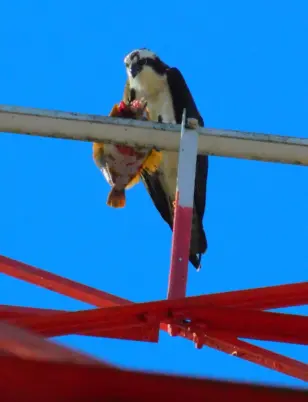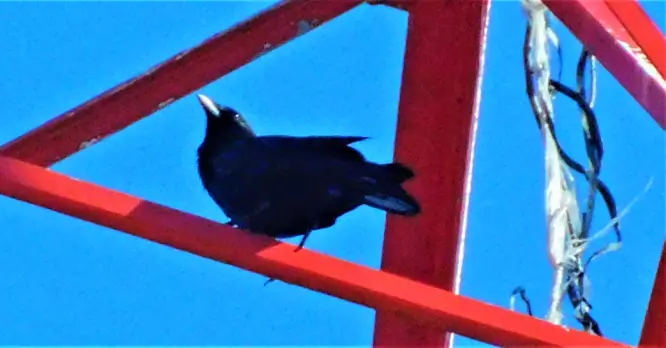Brain Food or Brains, Food?
Fish: What’s Always for Dinner
by Marcia Wilson

Every year the Lakewood campus sees the return of its mated osprey pair to the nest on the radio tower. Once they rebuild the home the battle for the chicks’ survival begins. Ospreys are restricted to an all-fish diet. Adults need 300 grams a day. This is about two medium-sized fish filets at the store, and over four times the amount of protein a human adult needs for the day.
After catching a meal, the male stops close enough to the aerie to know what’s going on before he quickly eats the head. Bald Eagle fathers do the same thing. University of Notre Dame’s researchers pointed out that fish spines orient backwards and when Papa eats the head this lowers the odds of his chicks lodging sharp bits of spine into their esophagus.
Getting ahead with nutrition
Fish heads are dietary storehouses of vitamins, oils, collagen, and calcium. This is the most nutritious portion of the whole fish and why the United Nations Food and Agriculture Organization has been challenging the world to lower global food waste and start eating all the fish, not just the “popular parts.”
Ospreys aren’t concerned with human snobbery, but global overfishing directly impacts their lives. Indeed, fish heads are potentially three times the size of the fillet cut out of the same fish for a human’s table. The math shows the gross potential for waste, or a re-thinking of how to divert the waste stream into consumption as fertilizer, animal food, or a return to tasty and nourishing meals.
Culinary aficionados already utilize the nearby Asian markets where so-

called “scrap fish” await shoppers. The “selfishness” of the male eating before going to the nest is “self-care”. 2023’s cool weather made fishing very hard for him. He must bring food to the female as she guards the eggs and hatchlings. He could be providing for as many as five other ospreys. From a caloric perspective it makes more sense that he eat the fatty parts and leave the leaner pieces to his family. The female cannot leave the nest, and their young are too weak to protect themselves from predators. He needs to shovel the meal quickly, rest, and then fly away to fish again. The chicks at this writing have fledged and are about to fly thanks to his hard work.